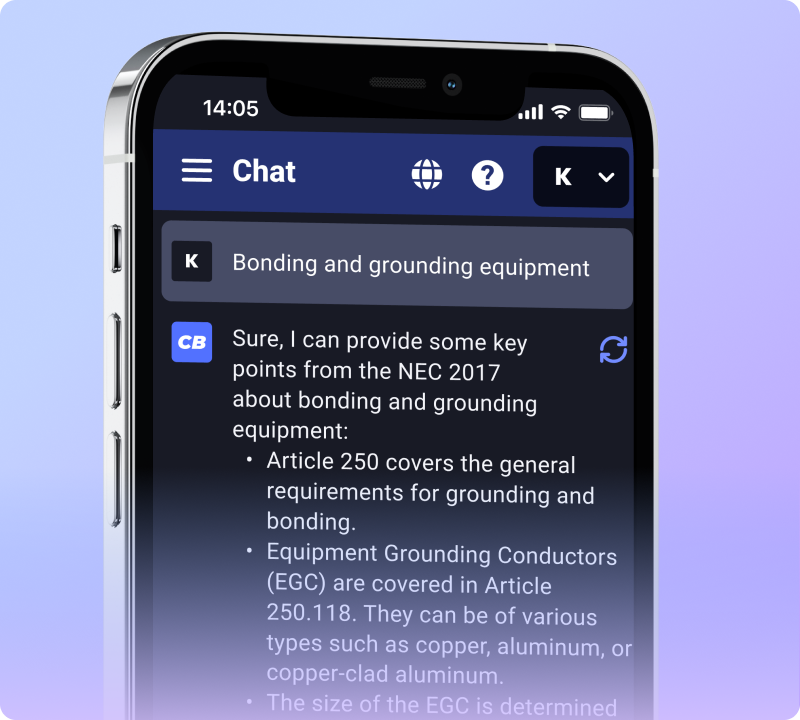Are you worried about properly installing buried electrical cables? The National Electrical Code (NEC) sets the standards for safe electrical setups. Our article breaks down these rules into simple steps, ensuring your underground wiring project meets legal requirements.
Keep reading to make sure you get it right.
Key Takeaways
- The National Electrical Code (NEC) requires ground-fault circuit interrupters for all 125 and 250-volt outdoor receptacles to prevent electric shocks.
- Buried electrical wires must follow specific depths: high voltage cables need at least 24 inches of cover, PVC conduits require 18 inches below surface, and low-voltage lights should be buried at least 6 inches deep.
- Before digging to install buried electrical wires, it’s important to call 811 and obtain necessary permits for safety and legal compliance.
Understanding NEC Code for Outdoor Buried Wiring
The NEC code outlines specific requirements for outdoor wiring. It covers aspects such as national electrical code basics and installation guidelines for underground electrical cables.
National Electrical Code Basics
The National Electrical Code (NEC) sets the standard for safe electrical installation. It demands that all 125 and 250-volt outdoor receptacles have ground-fault circuit interrupters (GFCIs).
This rule helps prevent electric shock outdoors. For homes, NEC insists on having outdoor outlets at both the front and back. These need weatherproof covers in damp areas to protect against moisture, as per NEC 406.9(A).
For any electrical work outside, using the right materials is key. PVC conduit or metal raceways protect wires underground from damage. The code also guides electricians on how deep to bury these conduits to keep them safe from harm.
Up next, we’ll examine specific requirements for outdoor wiring and why following these rules matters for your safety.
Specific Requirements for Outdoor Wiring
Outdoor wiring follows special rules to keep everything safe. High voltage cables that go directly in the ground need a cover of at least 24 inches unless they have protection from a plastic conduit.
This rule helps prevent accidents and ensure safety. For areas where wires power outdoor lights or small devices, like landscape lighting under 30 volts, the law says these must be at least 6 inches underground.
All electrical conduits outdoors require careful planning and adherence to standards.
If you’re using PVC conduits for your outdoor wiring projects, you must put them at least 18 inches below the surface. It’s also important not to mix low-voltage wires (12-24 volts) with standard house wiring (120/240 volts) in the same conduit.
This prevents electrical interference and keeps your system running smoothly without risking damage to low-voltage equipment.
Installation Guidelines for Underground Electrical Cables
Install underground electrical cables using the correct depth and protective measures. Ensure the minimum cover requirements are met for protection from physical damage.
Minimum Cover Requirements
For buried electrical wires, the National Electric Code sets clear rules. UF cables need at least 24 inches of earth on top of them before you cover them up. If you’re using PVC pipes to protect your wires, they must be under at least 18 inches of dirt.
Galvanized steel channels and low-voltage lights need just 6 inches.
Knowing these depths helps keep cables safe from damage during yard work or construction. Next, we’ll look at how to shield these wires from harm below ground.
Protection From Physical Damage
After covering how deep to bury electrical wires, it’s vital to shield them from harm. Cables and conductors coming up from the ground need protection by enclosures or pathways. These must stretch from below the surface up to a point 8 feet above ground level.
This rule ensures that the transition from buried sections to exposed areas is safe, guarding against physical damage.
Direct buried cables and conductors emerging from underground should be covered by enclosures extending up to at least 8 feet above grade.
To keep water out and prevent short circuits, these enclosures or conduits must be sealed at the ends. Also, when backfilling trenches after laying down cables or conduits, avoid using materials that could hurt them like sharp stones or debris.
Using trenchers carefully can help place wiring without damaging it during installation.
Use of Warning Ribbons and Labels
When burying underground service conductors 18 inches or more below grade, it’s crucial to place a warning ribbon not less than 12 inches above the installation. This is in accordance with NEC code 300.5(D)(3).
Marking the location with a warning ribbon helps prevent accidental damage and ensures easy identification of buried electrical wires during future digging or maintenance activities.
Creating a map or diagram of the outdoor wiring system can further enhance safety and efficiency for any future work involving the buried electrical cables. By incorporating this simple step into the installation process, homeowners and professionals can proactively safeguard against potential hazards and streamline any necessary adjustments in the future.
Burial Depth Options and Their Applications
When burying electrical wires, different burial depth options have specific applications that cater to various needs. The right depth depends on factors such as soil type, traffic load, and climate conditions.
Six-Inch Depth
Wires for landscape lights under 30 volts should be buried at least 6 inches deep. Galvanized metal electrical conduits must also be buried a minimum of 6 inches underground. Low-voltage landscape direct burial wires are required to be placed at least 6 inches deep in the ground.
Twelve-Inch Depth
The twelve-inch burial depth for electrical wires is suitable for direct burial in the ground without any additional protection or conduit. This depth is typically used for residential wiring and landscape lighting, ensuring sufficient coverage to prevent damage from digging and other outdoor activities.
According to Table E3803.1 of the National Electrical Code (NEC), specific types of circuits require a minimum burial depth, with the twelve-inch option being commonly recommended for many scenarios involving buried electrical wiring.
Using a twelve-inch depth provides a balance between accessibility and protection, meeting NEC requirements while allowing easy maintenance access when necessary. It offers adequate security against accidental damage and helps protect the integrity of the electrical system.
When planning underground electrical installations, considering the specific requirements and recommended depths according to NEC guidelines contributes to safe and compliant wiring practices.
Eighteen-Inch Depth
For outdoor electrical wiring in PVC conduit, the National Electric Code (NEC) mandates a minimum of 18 inches of cover. This depth requirement aims to protect the wiring from damage caused by digging or other activities on the surface.
It is crucial to adhere to this standard for safety and legal compliance when burying electrical wires outdoors.
When installing underground electrical cables at an eighteen-inch depth, it’s essential to follow these regulations meticulously. In particular cases where trenchers or plows are used, attention should be paid to ensure that the required depth is maintained consistently along the entire length of the cable’s path.
Adhering to these guidelines is vital for ensuring safe and reliable outdoor electrical installations.
Twenty-Four Inch Depth
For direct-buried electrical wires in the United States, a minimum of 24 inches of earth cover is required, unless using a conduit. This depth regulation applies specifically to underground feeders and high voltage direct bury cables.
It ensures the safety and proper functioning of buried electrical wiring systems, meeting the relevant NEC requirements.
When installing underground UF cable or similar applications, it’s crucial to adhere to these burial depth standards as specified by the National Electrical Code.
Legal and Safety Considerations
When burying electrical wires, ensure to obtain the necessary permits and call 811 before digging. These actions are important for legal compliance and safety.
Obtaining Necessary Permits
Before burying underground cable, always remember to secure an electrical permit from the local authorities. Consulting with an electrical contractor and researching the relevant code rules are crucial before embarking on any project involving buried electrical wires.
The National Electrical Code (NEC) sets specific requirements for obtaining permits related to outdoor wiring, making it essential to stay informed about these regulations. Securing necessary permits is vital for ensuring compliance with legal and safety considerations.
Moving forward to “Importance of Calling 811 Before Digging”…
Importance of Calling 811 Before Digging
Before digging, it’s crucial to call 811, the national Call Before You Dig number. This helps prevent hitting underground utilities like buried electrical wires and causing potential hazards such as power outages or even serious injuries.
Making a map or diagram of the outdoor wiring system is also recommended for future digging jobs and electrical changes.
Conclusion
Remember to always comply with the NEC guidelines for buried electrical wires. Work with a certified electrician to ensure proper installation and safety. Understanding the burial depth options and legal considerations is crucial for a successful project.
Prioritize obtaining necessary permits and calling 811 before digging for safe installation. Always prioritize safety when working with electricity and never hesitate to seek professional help when needed.

